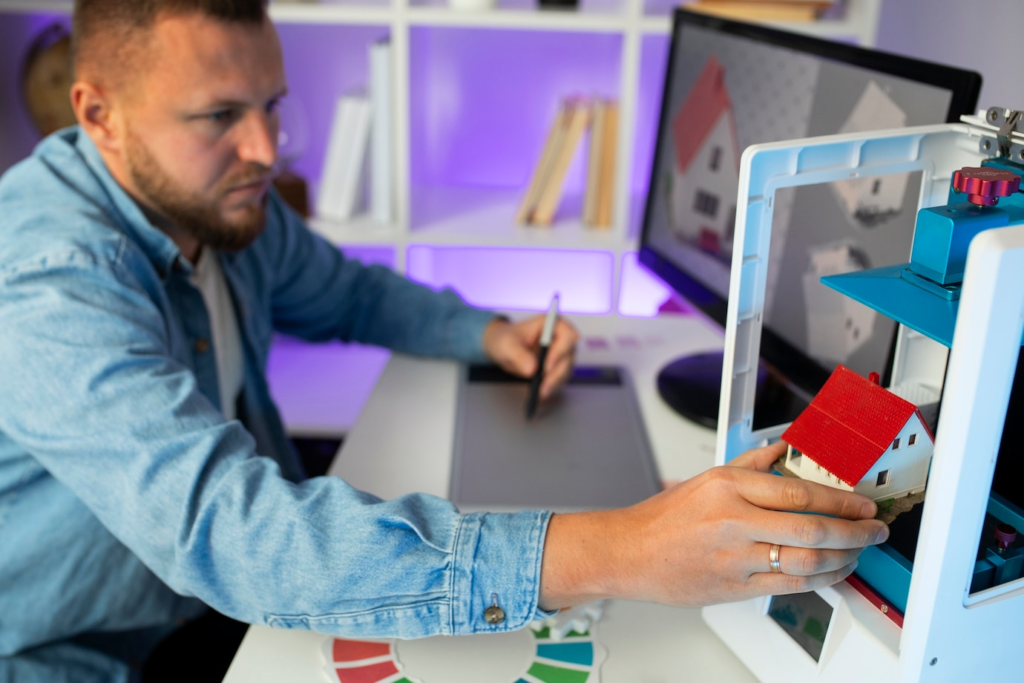Interior design is more than just creating aesthetically pleasing spaces. It requires a combination of technical expertise, creativity, and strong communication skills. As an interior design student, mastering essential skills can set you apart and help you thrive in this dynamic industry. In this blog, we’ll explore the top 5 skills every interior design student should focus on to build a successful career.
1. Space Planning and Layout Design

Understanding how to efficiently use and organize space is fundamental to interior design student. Space planning involves determining the function of a room, the flow of movement within the space, and ensuring furniture placement enhances both the form and usability of the area. An expert in space planning can turn even the smallest spaces into functional and visually appealing areas.
Key Aspects of Space Planning:
- Evaluating a room’s dimensions and layout.
- Optimizing space for functionality and movement.
- Understanding client needs and preferences to tailor space accordingly.
Tip for Students: Practice creating multiple layout designs for different room types, such as living rooms, offices, and bedrooms. Experiment with various furniture arrangements to enhance both function and aesthetic appeal.
2. Mastery of Design Software

As technology advances, proficiency in design software is becoming increasingly crucial in the interior design field. Tools like AutoCAD, SketchUp, and Adobe Creative Suite are used to create detailed floor plans, renderings, and mood boards, helping you present your ideas professionally to clients.
Commonly Used Interior Design Software:
- AutoCAD: For creating precise 2D and 3D floor plans.
- SketchUp: Ideal for quick 3D modeling and visualization.
- Adobe Photoshop and Illustrator: For enhancing presentations, editing images, and creating mood boards.
Tip for Students: Take advantage of free tutorials and online courses to enhance your skills with these tools. Regular practice will make you more efficient and comfortable with digital design processes.
3. Understanding of Color Theory and Textures

Color theory plays a significant role in shaping the mood, feel, and function of a space. Understanding how different colors interact and influence the perception of a room is essential for creating cohesive designs. Additionally, combining various textures—such as wood, fabric, or metal—can add depth and interest to a space.
Key Elements of Color Theory:
- Color Psychology: How colors affect emotions and behavior.
- Complementary and Analogous Colors: Creating balanced and harmonious color schemes.
- Light and Color: Understanding how natural and artificial lighting influences color perception.
Tip for Students: Experiment with color schemes and textures in real-life projects or virtual designs. Try creating mood boards to explore different palettes and combinations that evoke the desired emotional response from users.
4. Client Communication and Presentation Skills

As an interior designer, you will need to translate your client’s vision into a reality, which requires excellent communication and presentation skills. From understanding client needs to presenting your ideas clearly, being able to convey your design concept is crucial.
Key Communication Skills for Interior Designers:
- Active listening to understand client preferences and goals.
- Presenting your ideas with confidence, using clear visual aids like renderings or mood boards.
- Being open to feedback and making revisions when necessary.
Tip for Students: Practice presenting your design ideas to peers, instructors, or mentors. Role-play client meetings to get comfortable with answering questions and adjusting designs based on feedback.
5. Knowledge of Materials and Sustainability

An in-depth knowledge of materials and finishes is essential for making informed design decisions. Interior design student must understand the durability, sustainability, and aesthetic qualities of various materials, from flooring and wall treatments to furniture and fixtures. In today’s environmentally conscious world, being familiar with sustainable design practices and eco-friendly materials is a significant advantage.
Key Material Considerations:
- Durability and functionality for different spaces.
- Sustainability: Using eco-friendly materials like reclaimed wood, low-VOC paints, and energy-efficient lighting.
- Aesthetic impact: How the choice of materials contributes to the overall design vision.
Tip for Students: Stay updated with the latest trends in sustainable materials and technologies. Research suppliers and manufacturers who specialize in eco-friendly options to incorporate them into your projects.
Conclusion: Building a Strong Foundation
Mastering these five essential skills—space planning, design software, color theory, communication, and material knowledge—will not only prepare you for a successful career as interior design student but also set you apart from your peers. Whether you’re working on real-world projects or refining your craft in the classroom, focusing on these core competencies will give you the confidence to bring your creative visions to life.
By continuously honing your abilities and staying up to date with industry trends, you’ll be well-equipped to meet the evolving demands of the interior design profession.
